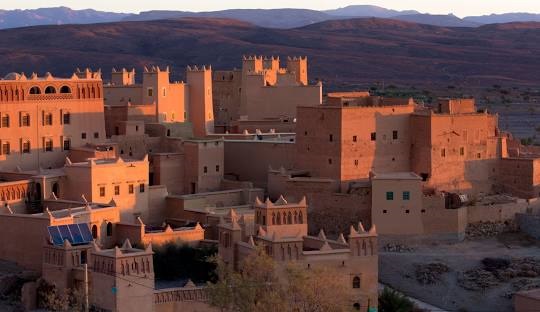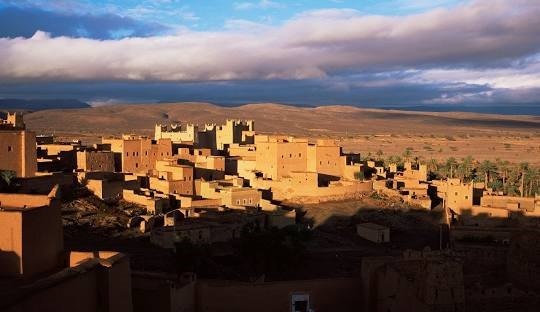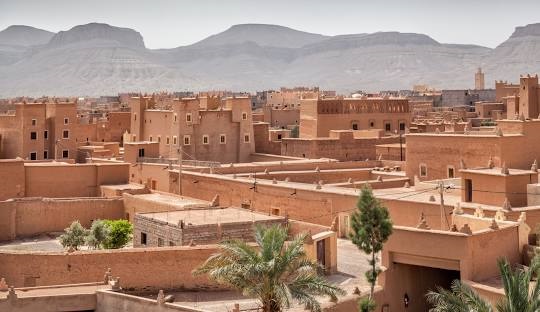North African mountain ranges, located in the northwestern corner of Africa, are known for their diverse landscapes, rich cultural heritage, and a unique blend of Arab, Berber, and European influences. Among their most striking geographical features is the large portions that dominate the country. These mountains are not only majestic in their beauty but also play a crucial role in shaping Morocco’s climate, culture, and economy.
North African Mountain Ranges
The three major North African mountain ranges in Morocco are the Rif mountains, the Middle Atlas, and the High Atlas, home to Riad Nkob, each with its own distinct characteristics. The Rif Mountains, located in northern Morocco, stretch from the Mediterranean coast in the northeast to the northwest, near the Atlantic Ocean. Though not as tall as the Atlas ranges, the Rif Mountains are rugged, dramatic, and densely forested, offering spectacular coastal views.
The highest peak in this range, Jebel Tidirhine, rises to an elevation of 2,456 meters. The Rif region is traditionally the homeland of the Rifian Berbers, an indigenous group with a rich cultural history in the Kingdom of Morocco. The people here have long resisted foreign control, maintaining a really strong sense of independence.
This area of the North African mountain ranges has seen numerous revolts against colonial powers, most notably during the Rif War of the 1920s, when Berber fighters mounted a fierce resistance against Spanish and French forces. The Rif mountains are characterized by their lush greenery, thanks to the Mediterranean climate, which brings heavy winter rainfall.
The area is also known for its cultivation of various crops, including olives, figs, and cannabis, the latter of which is illicitly grown in some regions. The mountains themselves are a biodiversity hotspot, home to unique plant species and wildlife such as the Barbary macaque, an endangered primate species found in the forests.
For travelers, the Rif North African mountain ranges offers numerous hiking opportunities, especially around the town of Chefchaouen, famous for its blue-painted buildings nestled in the beautiful foothills of the mountains. The region’s rivers, waterfalls, and pristine valleys make it an appealing destination for eco-tourism and adventure sports.
The Middle Atlas lies to the south of the Rif, forming a barrier between the coastal plains and the interior of Morocco. This range stretches from the Atlantic Ocean in the west toward Algeria in the east, with its highest peak, Jbel Bou Naceur, reaching 3,340 meters. Known for its plateaus, rolling hills, and deep valleys, the Middle Atlas is cooler and wetter than many other regions, creating conditions conducive to the growth of thick cedar and oak forests.
The town of Ifrane, located within the Middle Atlas North African mountain ranges, is sometimes referred to as the Switzerland of Morocco due to its alpine-like climate and architecture. Ifrane is also a gateway to the nearby national parks and nature reserves, such as its National Park, which protects the local ecosystem and is home to various species, including the Barbary lion, which, although extinct in the wild, was once native to this region.
The Middle Atlas is often associated with traditional Berber culture. Many villages in the mountains remain largely untouched by modernity, preserving ancient customs, crafts, and lifestyles. The Berber people of the Middle Atlas have long depended on agriculture, herding, and artisanal crafts to sustain themselves.
North African mountain ranges also have a strong tradition of music, particularly the Ahidous, a form of group dance and singing performed during festivals and communal gatherings. For outdoor enthusiasts, the Middle Atlas offers a range of activities, including hiking, birdwatching, and skiing during the winter months. Its abundant rivers and lakes, such as Dayet Aoua and Lake Azrou, make it a popular destination for picnicking, fishing, and boating.
The High Atlas is Morocco’s most famous and highest mountain range, often referred to as the roof of North Africa because it contains the tallest peaks in the region. This range runs diagonally across the country, from the Atlantic coast near Agadir in the west to the northeastern border with Algeria. The highest point is Mount Toubkal, which soars to 4,167 meters and is the tallest peak in North Africa.
Among North African mountain ranges, the High Atlas is geologically young and consists of jagged peaks, deep gorges, and wide valleys. Its altitude creates a distinct climate, with snow covering the highest peaks for much of the year, attracting skiers and mountaineers. The region around Toubkal is particularly popular with hikers and climbers, offering stunning views of the snow-capped mountains, verdant valleys, and terraced fields that dot the landscape.
Historically, the High Atlas has been a natural barrier, separating the fertile coastal plains from the arid desert regions to the south. This isolation has allowed the Berber communities in the region to maintain their traditions and language for centuries. The Berber villages, with their distinctive flat-roofed adobe houses, are scattered across the mountains, often clinging to the sides of steep cliffs or nestled in hidden valleys.
Among North African mountain ranges, the High Atlas is also home to some of Morocco’s most important rivers, such as the Draa and the Oum Er-Rbia, which provide vital water resources for agriculture and drinking. The southern slopes of the High Atlas descend into the Sahara desert, creating a dramatic contrast between the arid desert and the lush mountain valleys.
The area around the Dades and Todra Gorges is particularly famous for its dramatic scenery, with towering red rock walls and narrow canyons carved by rivers over millennia. Tourism in the High Atlas has grown significantly in recent years, with visitors drawn to the region’s stunning landscapes, trekking opportunities, and cultural experiences.
Local Berber guides often lead treks through the North African mountain ranges, offering travelers a chance to experience traditional Berber hospitality, including stays in mountain lodges or homes, where they can enjoy local cuisine and customs. South of the High Atlas lies the Anti-Atlas, a much older and geologically different mountain range.
Stretching from the Atlantic coast near Agadir to the edge of the Sahara, the Anti-Atlas is characterized by its arid, rocky terrain and lower elevations. The highest peak, Jebel Siroua, stands at 3,304 meters. Unlike the lush greenery of the Rif and Middle Atlas, the Anti-Atlas is a harsh and arid region, where water is scarce and vegetation is sparse.
This part of the North African mountain ranges is marked by stark, rugged landscapes, with ochre-colored mountains, dry riverbeds, and isolated oases providing the only green spots. The Anti-Atlas is also rich in minerals, including copper and silver, and mining has been an important part of the local economy. Despite its harsh conditions, the Anti-Atlas is home to resilient Berber communities who have adapted to the challenging environment.
Traditional terracing and irrigation systems allow them to grow crops such as barley, almonds, and dates in the fertile valleys. The region is also known for its distinctive Berber architecture, with ancient fortified homes and villages dotting the landscape. The Anti-Atlas is a less-visited region than the more famous High Atlas, but it offers unique attractions for adventurous travelers.
The area around Tafraoute, with its stunning pink granite rock formations and hidden valleys, is particularly popular with hikers and rock climbers of North African mountain ranges. The Anti-Atlas is also the gateway to the Sahara, and many visitors use it as a starting point for desert excursions, including camel treks and 4×4 tours into the vast dunes of the Erg Chebbi and Erg Chigaga.
North African mountain ranges are a vital part of the country’s identity, shaping its landscapes, culture, and way of life. From the lush, forested slopes of the Rif to the rugged, snow-capped peaks of the High Atlas, and the arid expanses of the Anti-Atlas, these mountains are not only natural wonders but also living cultural landscapes.
North African mountain ranges provide a haven for biodiversity, a source of water, and a space where ancient traditions continue to thrive in the face of modernity. Whether you’re a traveler seeking adventure or a student of history and culture, these mountains offer something truly extraordinary for each and everyone.



